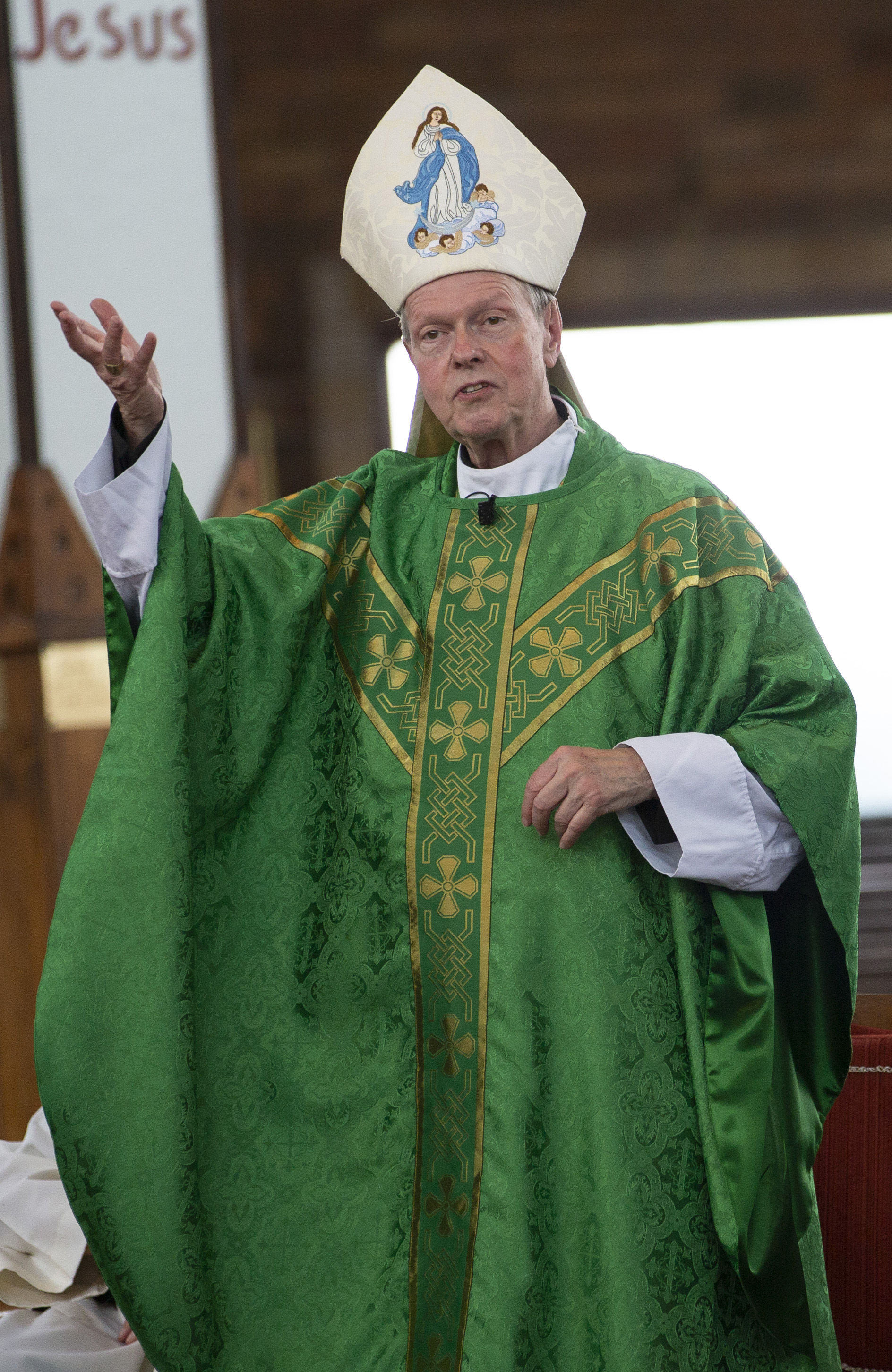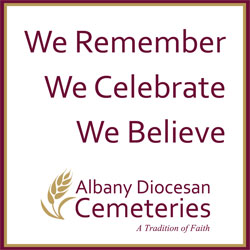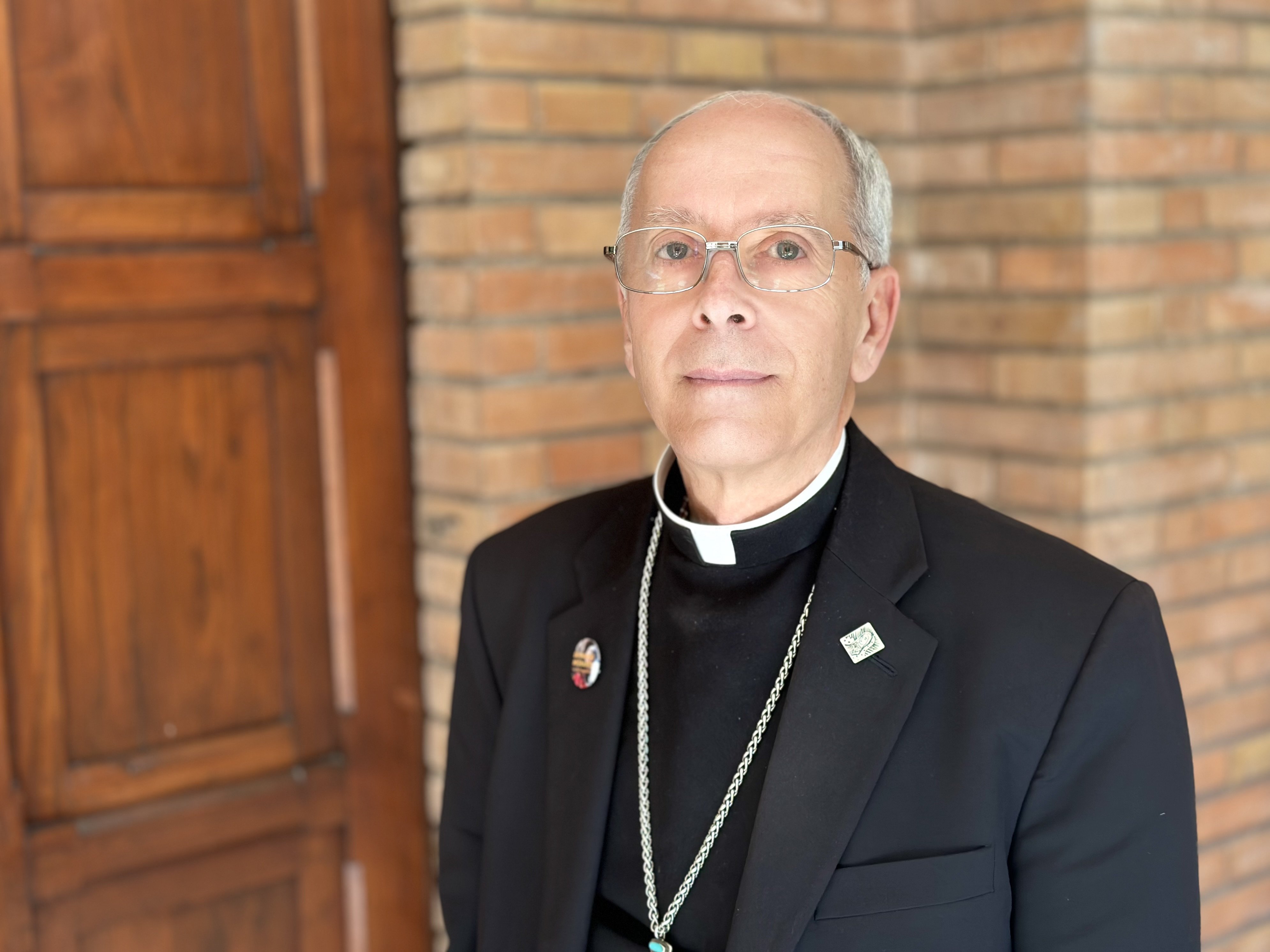April 6, 2018 at 1:53 p.m.
'AMAZING GOD' REFLECTION
If martyrs could evangelize, why can't we?
A twin-engine Cessna airplane flew eight of us over the mountainous region of Guatemala to a dirt-road landing strip at Playa Grande. We were a mix of Maryknoll women religious, priests and a brother, plus two diocesan priests.
Upon landing, we packed into a micro-van that pitched back and forth and scraped bottom many times on the unimproved road during the two-hour road trip to our destination: Ixcan Grande, El Quiché, Guatemala. Each kilometer covered was a miracle.
The invitation had come to me via a phone call from a priest friend, Padre Juan Vazquez, who is pastor of the church of Nuestra Señora de la Candelaria de los Martires. The parish was commemorating the 35th anniversary of the martyrdom of Rev. William Woods, MM.
Within an hour of his call, I had a knapsack packed and I was off to Guatemala City to join the group for this adventure of grace.
Father Woods was a larger-than-life Maryknoll priest. Originally from Texas, he was, in the words of this indigenous Maya community, "the shepherd who laid down his life for us."
He arrived in Guatemala in 1958 at the age of 27 and ministered to faith communities in Barillas until 1996, when he was asked to take charge of developing projects for human development in Mayaland Grande.
These impoverished Mayan communities clamored for land and longed for a dignified way of life where they could live peacefully and cultivate food staples of corn and beans.
Father Woods organized and empowered this dispirited people into an energetic force. They now believed they could move mountains and live their dreams.
The Maryknoller used an inheritance and donations to purchase land in this remote region. Quickly, co-operatives were formed and a clinic, a school, houses and even a radio station were built.
Father Woods learned to fly a plane after some friends in Texas donated one so that he could transport goods in and out of Ixcán. Soon, this flourishing community had more than 1,000 head of cattle grazing on the lush, green vegetation.
However, all this was a long introduction to Father Woods' sharing fully in the paschal mystery of Jesus, the Good Shepherd, who laid down His life for us.
Socio-political events converged and the love the priest showed to his people drew hatred from the elite. On Nov. 22, 1976, his plane is believed to have been shot down by the Guatemalan military - with four passengers aboard - in the jungles of Ixcán.
The communities of resistance Father Woods had served were later forced to flee the repression by the oligarchy and military into Mexico, where they lived in refugee camps for 10 years. Their land was illegally taken from them.
The anniversary celebration to which we were invited drew more than 1,000 indigenous people. Many were part of the returned communities of resistance - now back on their land, but still rebuilding their lives.
The weekend centered on a Mass and a procession with the "restos" (remains) of Father Woods carried reverently into the church while the litany of martyrs was chanted.
I imagined the force of their prayer to be like the loud shout of Jesus calling forth Lazarus from the tomb. We felt that Father Woods and the other Central American martyrs were definitely present!
This experience gave me cause to reflect on mission and evangelization, now in focus in our Diocese. Both involve audacious, prophetic witness. Evangelization means recovering and following Jesus, in whose name we are sent to announce the Good News.
This profound experience of the Gospel inevitably leads to conflict with the powers of the anti-reign of God. The cross is the consequence of the struggle for justice.
Father Woods is only one of a large "cloud of witnesses" who gave their lives building the reign of God and struggled against the anti-reign of worldly powers. Others include:
• four Churchwomen brutally murdered in El Salvador for their work with poor refugees in the camps on Dec. 2, 1980;
• Sister Barbara Ann Ford, who died violently in Guatemala on May 5, 2001, after working for two decades helping civil war victims in Guatemala through a mental health project to deal with their memories;
• Sister Dorothy Stang, a martyr in the Brazilian rainforest, who defended the rights of campesinos and lived among those who wanted her dead. When they finally came for her, she read passages from the Bible to her killers. They listened for a moment, then fired six bullets into her body;
• Bishops Oscar Romero of El Salvador and Juan Gerardi of Guatemala, killed for speaking the truth to those in power; and
• Rev. Stan Rother, martyred July 28, 1981, in Santiago, Guatemala, for his ministry among catechists and campesinos.
They all died for helping and defending victims against their victimizers. As Archbishop Romero prophetically stated, "They got in the way."
Their example can embolden us to live the Gospel more radically in our own culture. How do we evangelize in a culture that sacrifices so many to the idols of militarism, national security, rapacious consumerism, unbridled greed?
The Latin American Church, as Rev. Jon Sabrino, SJ, writes, offers our Church in the north the gifts of "Jesus-like martyrs." Their example not only continues to be fruitful and raise hope among the crucified peoples in Latin America, but offers us models of evangelization and of what it means to be "missioned," or sent.
Father Sabrino writes: "Building the reign and struggling against the anti-reign gives substance to mission. The cross is central to evangelization and mission. Without this, all is carried away in the wind."
My experience in Guatemala taught me that evangelization is not so much about a program as it is about keeping alive the dangerous memory of Jesus.
(View a video about Father Woods at www.youtube.com/watch?v=vNB9cmfuDpw.)[[In-content Ad]]
SOCIAL MEDIA
OSV NEWS
- US bishops will review health care guidelines to address ‘gender interventions’
- Federal appeals court to hear cases over Ten Commandments in public schools
- Economists express concern about the poor as Supreme Court weighs Trump’s tariffs
- How many vocations are there?
- Pope welcomes election of new major archbishop for Romanian church
- Nigeria: Diocese mourns following death of kidnapped teen seminarian
- Changing demographics, technology challenge all Christians, pope says
- Pope Leo calls for dialogue as US builds up military presence on Venezuelan coast
- Former House speaker Nancy Pelosi announces she will not seek reelection
- Pope welcomes Palestinian leader; discusses Gaza, peace







Comments:
You must login to comment.